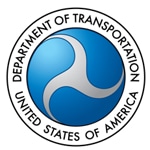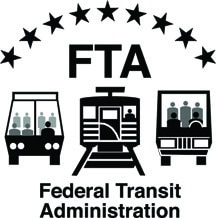
DOT is committed to maintaining public safety while providing maximum flexibility to allow transportation industries to conduct their operations safely and efficiently during this period of national emergency.
The below guidance on compliance with the DOT and modal drug and alcohol testing programs apply during this period of national emergency.
For DOT-regulated employers:
- As a DOT-regulated employer, you must comply with applicable DOT training and testing requirements.[2] However, DOT recognizes that compliance may not be possible in certain areas due to the unavailability of program resources, such as collection sites, Breath Alcohol Technicians (BAT), Medical Review Officers (MRO) and Substance Abuse Professionals (SAP). You should make a reasonable effort to locate the necessary resources. As a best practice at this time, employers should consider mobile collection services for required testing if the fixed-site collection facilities are not available.[3]
- If you are unable to conduct DOT drug or alcohol training or testing due to COVID-19-related supply shortages, facility closures, state or locally imposed quarantine requirements, or other impediments, you are to continue to comply with existing applicable DOT agency requirements to document why a test was not completed. If training or testing can be conducted later (e.g., supervisor reasonable suspicion training at the next available opportunity, random testing later in the selection period, follow-up testing later in the month), you are to do so in accordance with applicable modal regulations. Links to the modal regulations and their respective web pages can be found at https://www.transportation.gov/odapc/agencies.
- If employers are unable to conduct DOT drug and alcohol testing due to the unavailability of testing resources, the underlying modal regulations continue to apply. For example, without a “negative” pre-employment drug test result, an employer may not permit a prospective or current employee to perform any DOT safety-sensitive functions, or in the case of the Federal Aviation Administration (FAA), you cannot hire the individual (See 14 CFR § 120.109(1) and (2)).
- Additionally, DOT is aware that some employees have expressed concern about potential public health risks associated with the collection and testing process in the current environment. Employers should review the applicable DOT Agency requirements for testing to determine whether flexibilities allow for collection and testing at a later date.
- As a reminder, it is the employer’s responsibility to evaluate the circumstances of the employee’s refusal to test and determine whether or not the employee’s actions should be considered a refusal as per 49 CFR § 40.355(i). However, as the COVID-19 outbreak poses a novel public health risk, DOT asks employers to be sensitive to employees who indicate they are not comfortable or are afraid to go to clinics or collection sites. DOT asks employers to verify with the clinic or collection site that it has taken the necessary precautions to minimize the risk of exposure to COVID-19.
- Employers should revisit back-up plans to ensure the plans are current and effective for the current outbreak conditions. For example, these plans should include availability of collectors and collection sites and BAT, and alternate/back-up MRO, as these may have changed as a result of the national emergency. Employers should also have regular communications with service agents regarding the service agent’s availability and capability to support your DOT drug and alcohol testing program.
For DOT-regulated employees:
- If you are experiencing COVID-19-related symptoms, you should contact your medical provider and, if necessary, let your employer know about your availability to perform work.
- If you have COVID-19-related concerns about testing, you should discuss them with your employer.
- As a reminder, it is the employer’s responsibility to evaluate the circumstances of the employee’s refusal to test and determine whether or not the employee’s actions should be considered a refusal as per 49 CFR § 40.355(i).
For service agents:
- As a collector, BAT, laboratory, MRO, or SAP, you should continue to provide services to DOT-regulated employers if it is possible to do so in accordance with state or local mandates related to COVID-19. Should you have concerns about COVID-19 when testing or interacting with employees, please follow your company policy, directions from state and local officials, and guidance from the Centers for Disease Control and Prevention (CDC).
You are encouraged to continue to monitor guidance from public health officials and to refer to official government channels for additional information related to COVID-19. The CDC provides helpful guidance and insight from medical professionals who closely monitor the virus. The CDC latest updates (https://www.cdc.gov/coronavirus/2019-ncov/index.html). Also for reference, the Occupational Safety and Health Administration has released guidance on preparing workplaces for COVID-19 (https://www.osha.gov/Publications/OSHA3990.pdf).
[1] This guidance document does not have the force and effect of law and is not meant to bind the public in anyway. This guidance is intended only to provide clarity regarding existing requirements under the law.
[2]How to conduct testing is found in 49 CFR Part 40 (see https://www.transportation.gov/odapc/part40), while who gets tested and when (along with drug and alcohol-related training requirements) can be found in the applicable DOT modal regulations (see https://www.transportation.gov/odapc/agencies).
[3]As a reminder, point-of-collection testing or instant tests are not authorized in DOT drug testing (see https://www.transportation.gov/odapc/part40/40-210).
 As mandated by its drug and alcohol regulation, the Federal Transit Administration (FTA) will increase the minimum rate of random drug testing from 25 percent to 50 percent of covered employees for employers subject to FTA’s drug and alcohol regulation, effective January 1, 2019. This change is due to an increase in the industry’s ‘‘positive rate’’ as reflected in random drug test data for calendar year 2017.
As mandated by its drug and alcohol regulation, the Federal Transit Administration (FTA) will increase the minimum rate of random drug testing from 25 percent to 50 percent of covered employees for employers subject to FTA’s drug and alcohol regulation, effective January 1, 2019. This change is due to an increase in the industry’s ‘‘positive rate’’ as reflected in random drug test data for calendar year 2017. The Federal Railroad Administration (FRA) has determined that the minimal annual random drug and alcohol testing rate will remain the same for 2017, as positive test rates have remained below the set threshold.
The Federal Railroad Administration (FRA) has determined that the minimal annual random drug and alcohol testing rate will remain the same for 2017, as positive test rates have remained below the set threshold. WASHINGTON – The U.S. Department of Transportation’s (DOT) Federal Railroad Administration (FRA) announced it has issued two final rules to better protect railroad employees working on or near railroad tracks. One rule amends the existing Roadway Worker Protection regulation. The second rule, Control of Alcohol and Drug Use, revises FRA’s existing alcohol and drug testing regulations and expands the requirements to now cover maintenance of way (MOW) employees. The second rule fulfills a requirement of the Rail Safety Improvement Act of 2008.
WASHINGTON – The U.S. Department of Transportation’s (DOT) Federal Railroad Administration (FRA) announced it has issued two final rules to better protect railroad employees working on or near railroad tracks. One rule amends the existing Roadway Worker Protection regulation. The second rule, Control of Alcohol and Drug Use, revises FRA’s existing alcohol and drug testing regulations and expands the requirements to now cover maintenance of way (MOW) employees. The second rule fulfills a requirement of the Rail Safety Improvement Act of 2008.